There’s only one milking machine on the Aran Islands, and it belongs to Gabriel Faherty. However, it’s not a herd of dairy cows he has, but dairy goats.
Listen to "Gabriel Faherty, Aran Islands Goats' Cheese" on Spreaker.
There were always goats on the islands when he was younger, but most were quite wild and used by farmers to keep briars and brambles down. Gabriel did have a pet goat as a child, so the interest has always been there.
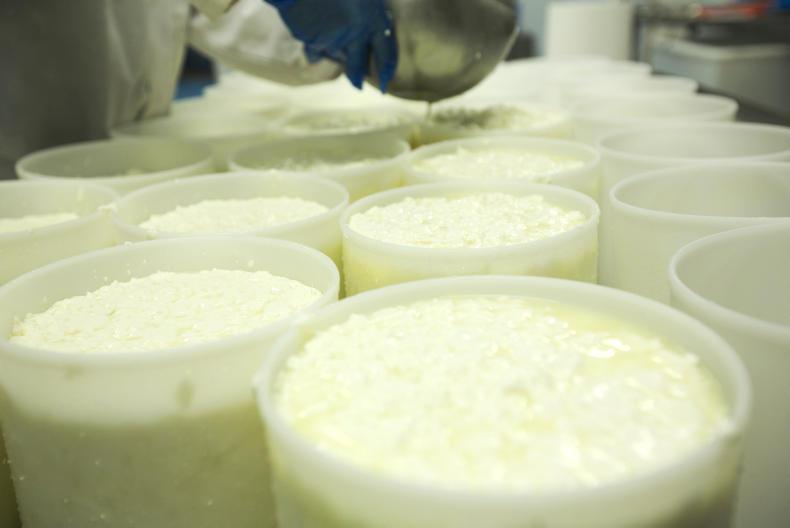
Growing up he farmed with his grandfather, who kept cattle, as Gabriel and his father still do today, alongside Gabriel’s goats.
Farming on Inishmore is quite different to farming on the mainland, and not just in terms of the logistics, but also how fragmented the farms are. On the islands most farmers have several small plots.
Gabriel went to school on Inishmore and for three years in Kiltimagh, Co Mayo, as his mother is from there.
Like most on the Aran Islands, he grew up speaking Irish, but also had good English, thanks to his mother’s influence.
“We’d have been speaking fluent Irish right up through,” says Gabriel.
“My mum came from Mayo, so we were lucky. A lot of the kids here in my time growing up wouldn’t have had good English, or maybe some of them mightn’t have had any English until they came to school.
“We were lucky because my granny and grandad were in Mayo and there was English there. A lot of our holidays were spent down there for the free labour, hay making and stuff like that.” 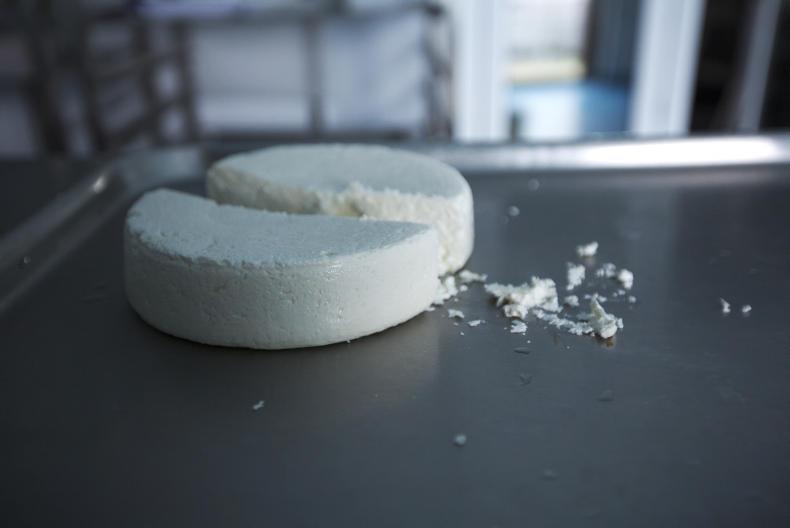
As with many island dwellers, fishing and farming have always been part of Gabriel’s life. He has made careers from both at different times in his life. Gabriel comes from a long line of fishermen; his grandfather, father and uncle were all fishermen.
“I grew up fishing. I went off to sea with my dad, I spent my first summer out with him when I was 11 or 12.
“My mum was a teacher, she had five sons and she didn’t want any of us going fishing. She told Dad to bring us out in bad weather to get it out of our systems.
“Unfortunately we liked it. It backfired a little bit on her, three of us ended up at sea so we did.
“After doing my Leaving Cert I went to sea and I was pretty much a career fisherman for years. I did all my captain’s tickets and I have my skipper’s full ticket, I could captain any size trawler anywhere around the world.”
Fishing for ideas
From the Pacific Ocean to the coast of Norway, Iceland and the Faroe Islands, Gabriel has fished all over the world.
He would then come home for the summer to do pony-and-trap tours around the island which, after getting wet once too often, turned into minibus tours.
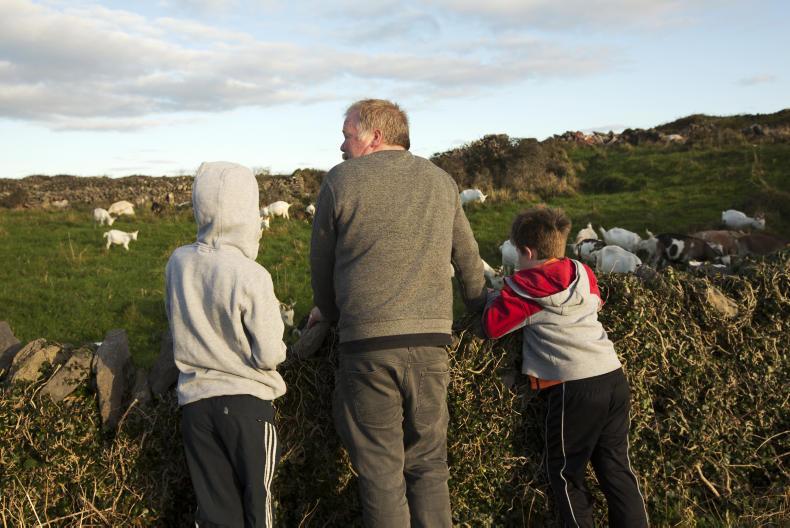
Gabriel Faherty of Aran Islands Goats' Cheese with his sons, Alan and Eoin.
Having married Orla, and with one child, Alan, at the time (Eoin, Donnacha and Fia were yet to arrive) Gabriel’s last year fishing was skippering a trawler out of the islands. He would go to sea, come back and do 10 days of tours in the minibus. All the while he was going between Galway, where he and his family were based, and the island.
It was around this time, Gabriel was on the ferry to the island one day when he struck up a conversation with the then Fianna Fáil minister, the late Brian Lenihan Jnr. They were discussing potential business ideas suitable for the island.
“One of the things he suggested was a golf course and other one was marina. As a throw-away comment he said a goat farm would work out there as well.
“I didn’t really think too much about it. I got off the boat and I went into the local shop to get the Skipper, the Fishing News and the Farmers Journal. In the Farmers Journal there was a goat course up in Ballyhaise, Co Cavan advertised.”
Taking it as some sort of sign, Gabriel went home and discussed the idea of a goat farm with Orla.
She encouraged him to do the course in Cavan, which he did. There he met Teagasc’s artisan food specialist, Eddie O’Neill and seasoned goat farmers, who shaped his idea.

Originally, Gabriel wanted to sell goat’s milk to Glenisk, but getting the milk off the island in the case of bad weather proved too much of an obstacle, and so the idea of processing his own cheese arose. Already doing tours of the island, the element of a visitor experience for tourists was added. And so, Gabriel began going on cheese-making courses for both hard and soft cheese.
In 2011, with Gabriel, Orla and Alan permanently back living on the island, Orla was pregnant with Eoin at the time, he went to buy 50 kids from St Tola Goat Cheese Farm in Co Clare.
“I went down to get them off Siobhan there and she said, ‘We’ll give you 25 first’. I said, ‘Are you not going to give me the 50?’ ‘Ah,’ she said, ‘take 25 and see how you get on. Take the other 25 when you come back again’.
“She was right, because it was taking two and a half hours to feed them all by bottle, three times a day.
“There were neighbours and friends all helping. I got feeders off JFC Agri – the Concannons in Tuam. We could feed 10 at a time then, so it brought it down to a half an hour three times a day, instead of two and a half hours three times a day.”
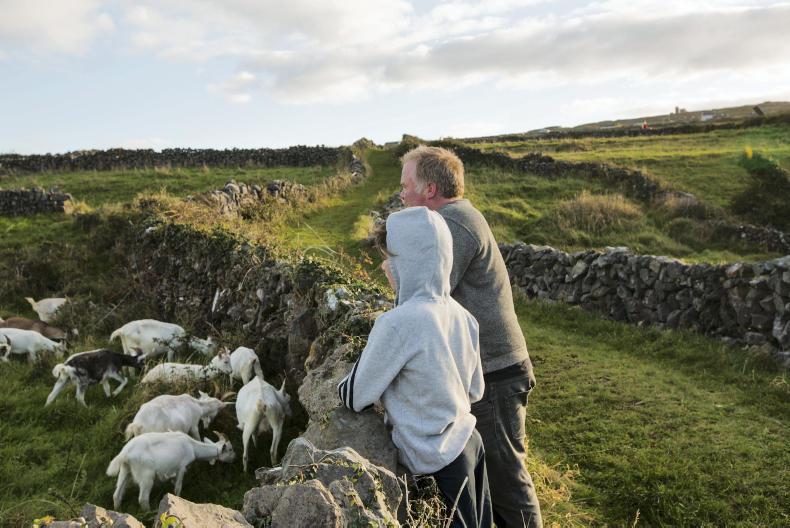
Construction underway
It took some time to develop the animals and infrastructure for Aran Islands Goats’ Cheese, it didn’t happen overnight, that’s for sure. Gabriel had to first get these goats in kid themselves. Even when they did kid, he wasn’t ready to start commercially producing cheese yet, he was using the milk to perfect his recipes.
He also had to build a new shed for the goats, build a parlour and put in a milking machine.
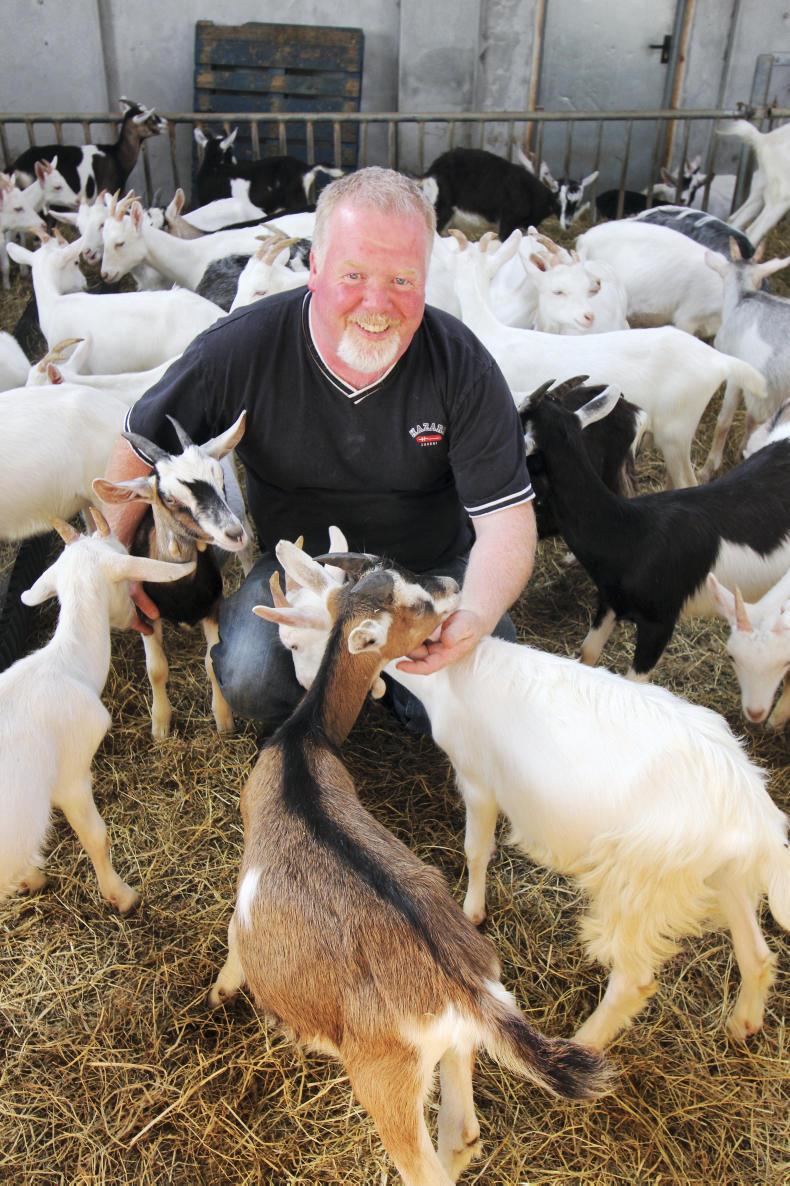
As well as producing cheese, Gabriel wanted to make a visitor experience out of the farm.
“There was a lot of money spent there now, but we got Udarás na Gaeltachta on board with us. They said they would back it up to 30%. I had that to go to the bank with. The bank hummed and hawed for a while. Eventually we got the loan.
“Most of the building work we did ourselves, my dad had a building background. The shed we built we put up ourselves.
“We built the parlour, everything. I can tell you exactly how many loads of stones and how many blocks went into it. I laboured with plasterers, I can plaster myself after it. I painted every inch of it,” laughs Gabriel.
And of course, this was all designed at the time with the visitor experience in mind.
On top of all the building work, Gabriel was also getting into a completely new enterprise. “I hadn’t seen a milking machine before,” explains Gabriel honestly. “We have the only milking machine on the islands.
“It’s exactly the same really as a cow parlour, except everything is smaller and narrower.
“There’s two on a cluster rather than four, because goats only have two teats whereas a cow has four. We have a DeLaval milking machine.”
Tapping into tourism
In 2014 Gabriel started making the cheese commercially and bringing visitor groups to the farm, where they could walk through and see the goats, parlour and cheese making facility. As Gabriel had always been doing tours of the island, first in his pony and trap and then in the minibuses, he started incorporating the goat farm into this. In 2018 Gabriel opened a farm shop and recently he has started a new food tour.
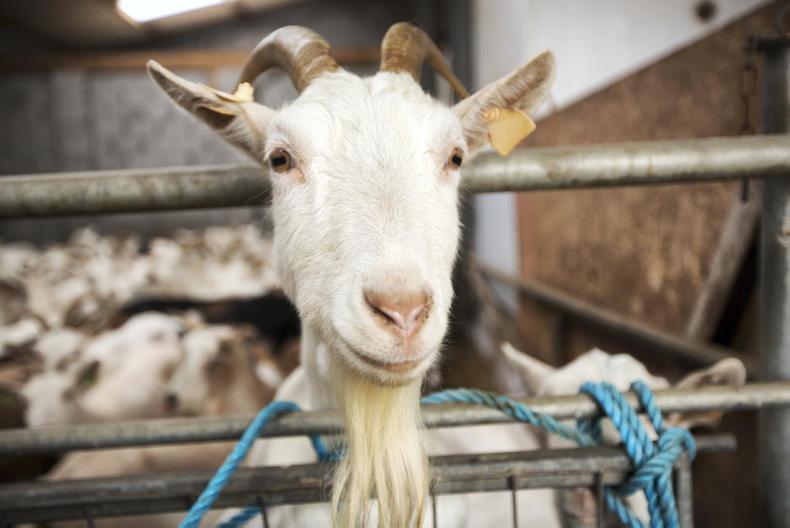
Garbiel got his first flock of 25 goats from St Tola Goat Cheese Farm in Co Clare.
The range of Aran Islands Goats’ Cheese includes a soft natural, a soft with dillisk seaweed, a soft with sundried tomato, olive and garlic and a hard feta. The pearls of soft cheese are sold in sunflower oil, which preserves them.
At this time of year, on a normal year that is, 80% of Aran Islands Goats’ Cheese would be sold locally to restaurants, retailers and at the farm shop.
On the island especially, businesses all work together and a lot of the restaurants use Gabriel’s cheese. In the winter months Gabriel would sell a lot of the product at trade shows and food fairs.
Since Gabriel started out officially six years ago, Aran Islands Goats’ Cheese has been lauded with many awards on both the tourism and food spectrums. In 2019 alone, the cheese got a Bronze and Gold Award at the Irish Cheese Awards, the Restaurants 
Association of Ireland (RAI) awarded him the Best Local Food Hero for Galway and he got runner up for Sustainable Farming at the Talamh Awards.
As for many, 2020 has proven to be a much more challenging year than 2019. As tourism has always been a part of Gabriel’s income, both through tours and selling to restaurants, things are challenging at the minute.
Normally Gabriel would be milking 70 goats, but he has dried off some at present as it is more difficult to get product off the island and the islands are closed to visitors. He’s hoping that there will be some domestic tourism towards the end of the year.
For most living on the Aran Islands, tourism affects them in some way.
“Tourism would be a big part of things, directly and indirectly. People could be teachers or builders themselves, but their kids in their teenage years would have summer jobs in restaurants and cafés. 
“Even growing up, young lads would be doing pony and trap. There was always a way of making a bob out here, so there was. I bought my first pony and trap when I was 12.
“My dad did it too and my grandma before me. My second son Eoin, he’s tailor made for it, he’s full of chat. I have the old trap here actually, it’s another COVID-19 job I have to do, to fix it up.”
While there are plenty of challenges at present, Gabriel has weathered many storms before, from fishing to pony and trap tours and farming, and always come out stronger at the other side.
Read more
Marching to her own beet
Meet the woman who hatched her egg business, starting with just 10 hens
There’s only one milking machine on the Aran Islands, and it belongs to Gabriel Faherty. However, it’s not a herd of dairy cows he has, but dairy goats.
Listen to "Gabriel Faherty, Aran Islands Goats' Cheese" on Spreaker.
There were always goats on the islands when he was younger, but most were quite wild and used by farmers to keep briars and brambles down. Gabriel did have a pet goat as a child, so the interest has always been there.

Growing up he farmed with his grandfather, who kept cattle, as Gabriel and his father still do today, alongside Gabriel’s goats.
Farming on Inishmore is quite different to farming on the mainland, and not just in terms of the logistics, but also how fragmented the farms are. On the islands most farmers have several small plots.
Gabriel went to school on Inishmore and for three years in Kiltimagh, Co Mayo, as his mother is from there.
Like most on the Aran Islands, he grew up speaking Irish, but also had good English, thanks to his mother’s influence.
“We’d have been speaking fluent Irish right up through,” says Gabriel.
“My mum came from Mayo, so we were lucky. A lot of the kids here in my time growing up wouldn’t have had good English, or maybe some of them mightn’t have had any English until they came to school.
“We were lucky because my granny and grandad were in Mayo and there was English there. A lot of our holidays were spent down there for the free labour, hay making and stuff like that.” 
As with many island dwellers, fishing and farming have always been part of Gabriel’s life. He has made careers from both at different times in his life. Gabriel comes from a long line of fishermen; his grandfather, father and uncle were all fishermen.
“I grew up fishing. I went off to sea with my dad, I spent my first summer out with him when I was 11 or 12.
“My mum was a teacher, she had five sons and she didn’t want any of us going fishing. She told Dad to bring us out in bad weather to get it out of our systems.
“Unfortunately we liked it. It backfired a little bit on her, three of us ended up at sea so we did.
“After doing my Leaving Cert I went to sea and I was pretty much a career fisherman for years. I did all my captain’s tickets and I have my skipper’s full ticket, I could captain any size trawler anywhere around the world.”
Fishing for ideas
From the Pacific Ocean to the coast of Norway, Iceland and the Faroe Islands, Gabriel has fished all over the world.
He would then come home for the summer to do pony-and-trap tours around the island which, after getting wet once too often, turned into minibus tours.

Gabriel Faherty of Aran Islands Goats' Cheese with his sons, Alan and Eoin.
Having married Orla, and with one child, Alan, at the time (Eoin, Donnacha and Fia were yet to arrive) Gabriel’s last year fishing was skippering a trawler out of the islands. He would go to sea, come back and do 10 days of tours in the minibus. All the while he was going between Galway, where he and his family were based, and the island.
It was around this time, Gabriel was on the ferry to the island one day when he struck up a conversation with the then Fianna Fáil minister, the late Brian Lenihan Jnr. They were discussing potential business ideas suitable for the island.
“One of the things he suggested was a golf course and other one was marina. As a throw-away comment he said a goat farm would work out there as well.
“I didn’t really think too much about it. I got off the boat and I went into the local shop to get the Skipper, the Fishing News and the Farmers Journal. In the Farmers Journal there was a goat course up in Ballyhaise, Co Cavan advertised.”
Taking it as some sort of sign, Gabriel went home and discussed the idea of a goat farm with Orla.
She encouraged him to do the course in Cavan, which he did. There he met Teagasc’s artisan food specialist, Eddie O’Neill and seasoned goat farmers, who shaped his idea.

Originally, Gabriel wanted to sell goat’s milk to Glenisk, but getting the milk off the island in the case of bad weather proved too much of an obstacle, and so the idea of processing his own cheese arose. Already doing tours of the island, the element of a visitor experience for tourists was added. And so, Gabriel began going on cheese-making courses for both hard and soft cheese.
In 2011, with Gabriel, Orla and Alan permanently back living on the island, Orla was pregnant with Eoin at the time, he went to buy 50 kids from St Tola Goat Cheese Farm in Co Clare.
“I went down to get them off Siobhan there and she said, ‘We’ll give you 25 first’. I said, ‘Are you not going to give me the 50?’ ‘Ah,’ she said, ‘take 25 and see how you get on. Take the other 25 when you come back again’.
“She was right, because it was taking two and a half hours to feed them all by bottle, three times a day.
“There were neighbours and friends all helping. I got feeders off JFC Agri – the Concannons in Tuam. We could feed 10 at a time then, so it brought it down to a half an hour three times a day, instead of two and a half hours three times a day.”

Construction underway
It took some time to develop the animals and infrastructure for Aran Islands Goats’ Cheese, it didn’t happen overnight, that’s for sure. Gabriel had to first get these goats in kid themselves. Even when they did kid, he wasn’t ready to start commercially producing cheese yet, he was using the milk to perfect his recipes.
He also had to build a new shed for the goats, build a parlour and put in a milking machine.

As well as producing cheese, Gabriel wanted to make a visitor experience out of the farm.
“There was a lot of money spent there now, but we got Udarás na Gaeltachta on board with us. They said they would back it up to 30%. I had that to go to the bank with. The bank hummed and hawed for a while. Eventually we got the loan.
“Most of the building work we did ourselves, my dad had a building background. The shed we built we put up ourselves.
“We built the parlour, everything. I can tell you exactly how many loads of stones and how many blocks went into it. I laboured with plasterers, I can plaster myself after it. I painted every inch of it,” laughs Gabriel.
And of course, this was all designed at the time with the visitor experience in mind.
On top of all the building work, Gabriel was also getting into a completely new enterprise. “I hadn’t seen a milking machine before,” explains Gabriel honestly. “We have the only milking machine on the islands.
“It’s exactly the same really as a cow parlour, except everything is smaller and narrower.
“There’s two on a cluster rather than four, because goats only have two teats whereas a cow has four. We have a DeLaval milking machine.”
Tapping into tourism
In 2014 Gabriel started making the cheese commercially and bringing visitor groups to the farm, where they could walk through and see the goats, parlour and cheese making facility. As Gabriel had always been doing tours of the island, first in his pony and trap and then in the minibuses, he started incorporating the goat farm into this. In 2018 Gabriel opened a farm shop and recently he has started a new food tour.

Garbiel got his first flock of 25 goats from St Tola Goat Cheese Farm in Co Clare.
The range of Aran Islands Goats’ Cheese includes a soft natural, a soft with dillisk seaweed, a soft with sundried tomato, olive and garlic and a hard feta. The pearls of soft cheese are sold in sunflower oil, which preserves them.
At this time of year, on a normal year that is, 80% of Aran Islands Goats’ Cheese would be sold locally to restaurants, retailers and at the farm shop.
On the island especially, businesses all work together and a lot of the restaurants use Gabriel’s cheese. In the winter months Gabriel would sell a lot of the product at trade shows and food fairs.
Since Gabriel started out officially six years ago, Aran Islands Goats’ Cheese has been lauded with many awards on both the tourism and food spectrums. In 2019 alone, the cheese got a Bronze and Gold Award at the Irish Cheese Awards, the Restaurants 
Association of Ireland (RAI) awarded him the Best Local Food Hero for Galway and he got runner up for Sustainable Farming at the Talamh Awards.
As for many, 2020 has proven to be a much more challenging year than 2019. As tourism has always been a part of Gabriel’s income, both through tours and selling to restaurants, things are challenging at the minute.
Normally Gabriel would be milking 70 goats, but he has dried off some at present as it is more difficult to get product off the island and the islands are closed to visitors. He’s hoping that there will be some domestic tourism towards the end of the year.
For most living on the Aran Islands, tourism affects them in some way.
“Tourism would be a big part of things, directly and indirectly. People could be teachers or builders themselves, but their kids in their teenage years would have summer jobs in restaurants and cafés. 
“Even growing up, young lads would be doing pony and trap. There was always a way of making a bob out here, so there was. I bought my first pony and trap when I was 12.
“My dad did it too and my grandma before me. My second son Eoin, he’s tailor made for it, he’s full of chat. I have the old trap here actually, it’s another COVID-19 job I have to do, to fix it up.”
While there are plenty of challenges at present, Gabriel has weathered many storms before, from fishing to pony and trap tours and farming, and always come out stronger at the other side.
Read more
Marching to her own beet
Meet the woman who hatched her egg business, starting with just 10 hens










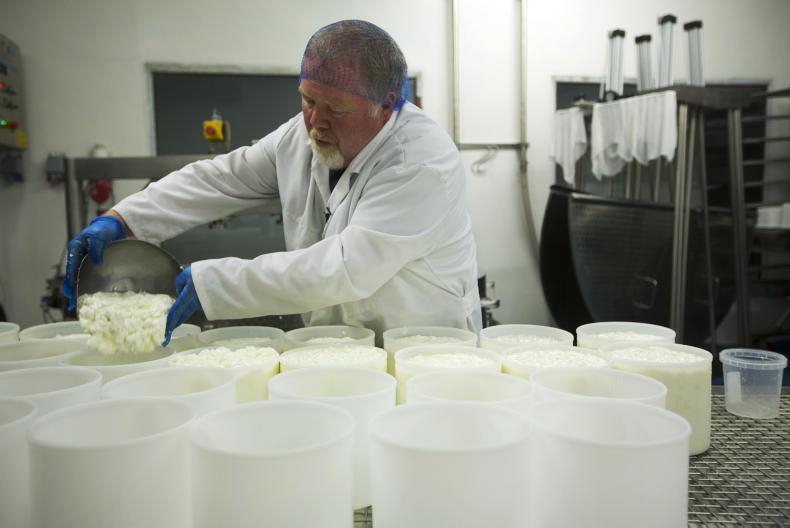




 This is a subscriber-only article
This is a subscriber-only article









SHARING OPTIONS: